ISS: SpaceX CRS-21 (International Space Station: SpaceX Commercial Resupply Service -21 Mission)
Non-EO
NASA
Mission complete
Human Spaceflight
Quick facts
Overview
| Mission type | Non-EO |
| Agency | NASA |
| Mission status | Mission complete |
| Launch date | 06 Dec 2020 |
| End of life date | 14 Jan 2021 |
ISS: SpaceX CRS-21 (International Space Station: SpaceX Commercial Resupply Service -21 Mission)
Launch
An upgraded version of SpaceX’s Dragon cargo freighter launched on Sunday, 6 December 2020 (16:17 UTC, 11:17 EST) from the Kennedy Space Center in Florida, loaded with 3.2 tons of supplies and experiments in the first of at least nine resupply flights to the International Space Station under a new NASA contract. 1)
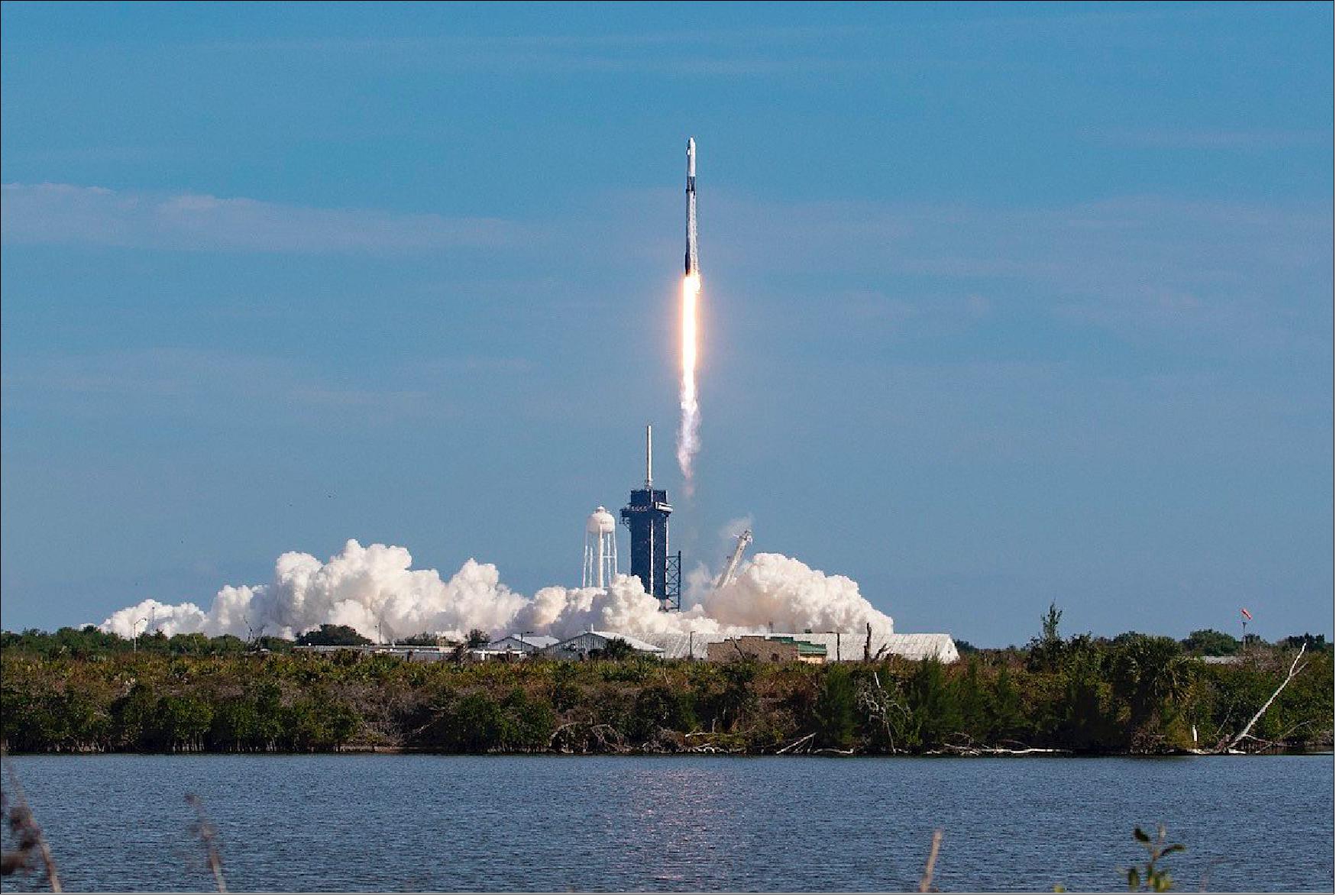
The launch signaled the start of SpaceX’s 21st operational resupply flight to the space station, and the first using the company’s new generation of Dragon cargo capsules. The first 20 flights, spanning a period from 2012 until earlier this year, used a now-retired version of the Dragon spacecraft.
The second-generation Dragon supply ship is based on SpaceX’s Crew Dragon vehicle designed to fly with astronauts. On the cargo capsule, SpaceX removed the crew-rated ship’s launch abort system and replaced the vehicle’s touchscreen displays and seats with racks and freezers to hold supplies and experiments.
Around two-and-a-half minutes into the mission, after the Falcon 9 surpassed the speed of sound and soared into the upper atmosphere, the booster shut down its engines and separated to begin descent maneuvers targeting a SpaceX landing platform parked several hundred miles northeast of the Kennedy Space Center in the Atlantic Ocean.
The reusable first stage booster (39 m in length) nailed its landing on SpaceX’s floating drone ship roughly eight-and-a-half minutes after liftoff, completing its fourth mission to space and back.
Moments later, the Cargo Dragon deployed from the rocket’s upper stage and opened its nose cone, revealing sensitive navigation sensors, a docking port, and forward thrusters for the planned 26-hour journey to the International Space Station.
Cargo Dragon spacecraft is loaded with 6,553 pounds (2,972 kg) of equipment and research hardware, including a new commercial airlock developed and owned by NanoRacks for attachment to the space station (the 'ISS: NanoRacks Bishop Airlock Module' is described in a separate file on the eoPortal).
The Cargo Dragon is scheduled to arrive at the space station on December 7. At approximately 1:30 p.m. EST, the spacecraft will autonomously dock to the station’s Harmony module – the first automated docking for a SpaceX cargo resupply mission. NASA astronauts and Expedition 64 Flight Engineers Kate Rubins and Victor Glover will monitor docking operations.
The Cargo Dragon spacecraft will remain attached to the space station for about one month, after which it will return to Earth with 5,200 pounds of research and return cargo, splashing down in the Atlantic Ocean.
Like Crew Dragon, the new cargo Dragon will splash down just off the Florida coast, rather than in the Pacific hundreds of kilometers from California as the first-generation Dragon cargo spacecraft. That will enable some research payloads to be handed over to scientists as soon as four hours after splashdown. “It’s a really critical capability for biological payloads,” said Kirt Costello, chief scientist for the ISS program office at NASA, at the prelaunch briefing.
This 21st contracted resupply mission for SpaceX is the first flight of an upgraded Dragon design, similar to that of the Crew Dragon used to transport astronauts to and from the station. The upgraded spacecraft has double the capacity for powered lockers, with 12, which preserve science and research samples during transport to and from Earth. Science payloads now also can remain in the upgraded Dragon through the duration of the mission as an extension to the station’s lab space. Four powered payloads will reside in Dragon during this docked mission. 2)
NASA's Scientific Investigations that Dragon is Delivering to the Space Station
Microbial Meteorite Miners
A mixture of meteorite samples and microbes are headed to the space station. Certain microbes form layers on the surface of rock that can release metals and minerals, a process known as biomining. A previous investigation from ESA (European Space Agency), BioRock, examined how microgravity affects the processes involved in biomining. ESA follows up on that work with BioAsteroid, which examines biofilm formation and biomining of asteroid or meteorite material in microgravity. Researchers are seeking a better understanding of the basic physical processes that control these mixtures, such as gravity, convection, and mixing. Microbe-rock interactions have many potential uses in space exploration and off-Earth settlement. Microbes could break down rocks into soils for plant growth, for example, or extract elements useful for life support systems and production of medicines.
Examining Changes in Hearts Using Tissue Chips
Microgravity causes changes in the workload and shape of the human heart, and it is still unknown if these changes could become permanent if a person lived more than a year in space. If that were to happen, it is possible it may take the returning astronaut many months to readjust to Earth’s gravity. Cardinal Heart studies how changes in gravity affect cardiovascular cells at the cellular and tissue level. The investigation uses 3D engineered heart tissues (EHTs), a type of tissue chip. Results could provide new understanding of heart problems on Earth, help identify new treatments, and support development of screening measures to predict cardiovascular risk prior to spaceflight.
Counting White Blood Cells in Space
HemoCue tests the ability of a commercially available device to provide quick and accurate counts of total and differentiated white blood cells in microgravity. Doctors commonly use the total number of white blood cells and counts of the five different types of white blood cells to diagnose illnesses and monitor a variety of heath conditions on Earth. Verification of an autonomous capability for blood analysis on the space station is an important step toward meeting the health care needs of crew members on future missions.
Building with Brazing
SUBSA-BRAINS (BRazing of Aluminum alloys IN Space) examines differences in capillary flow, interface reactions, and bubble formation during the solidification of brazing alloys in microgravity. Brazing is a type of soldering used to bond together similar materials, such as an aluminum alloy to aluminum, or dissimilar ones such as aluminum alloy to ceramics, at high temperatures. The technology could serve as a tool for constructing human habitats and vehicles on future space missions as well as for repairing damage caused by micrometeoroids or space debris.
A new and Improved door to space
Launching in the trunk of the Dragon capsule, the Nanoracks Bishop Airlock is a commercial platform that can support a variety of scientific work on the space station. Its capabilities include deployment of free-flying payloads such as CubeSats and externally-mounted payloads, housing of small external payloads, jettisoning trash, and recovering external Orbital Replacement Units (ORUs). ORUs are modular components of the station that can be replaced when needed, such as pumps and other hardware. Roughly five times larger than the airlock on the Japanese Experiment Module (JEM) already in use on the station, the Bishop Airlock allows robotic movement of more and larger packages to the exterior of the space station, including hardware to support spacewalks. It also provides capabilities such as power and Ethernet required for internal and external payloads.
Your Brain on Microgravity
The Effect of Microgravity on Human Brain Organoids observes the response of brain organoids to microgravity. Small living masses of cells that interact and grow, organoids can survive for months, providing a model for understanding how cells and tissues adapt to environmental changes. Organoids grown from neurons or nerve cells exhibit normal processes such as responding to stimuli and stress. Therefore, organoids can be used to look at how microgravity affects survival, metabolism, and features of brain cells, including rudimentary cognitive function.
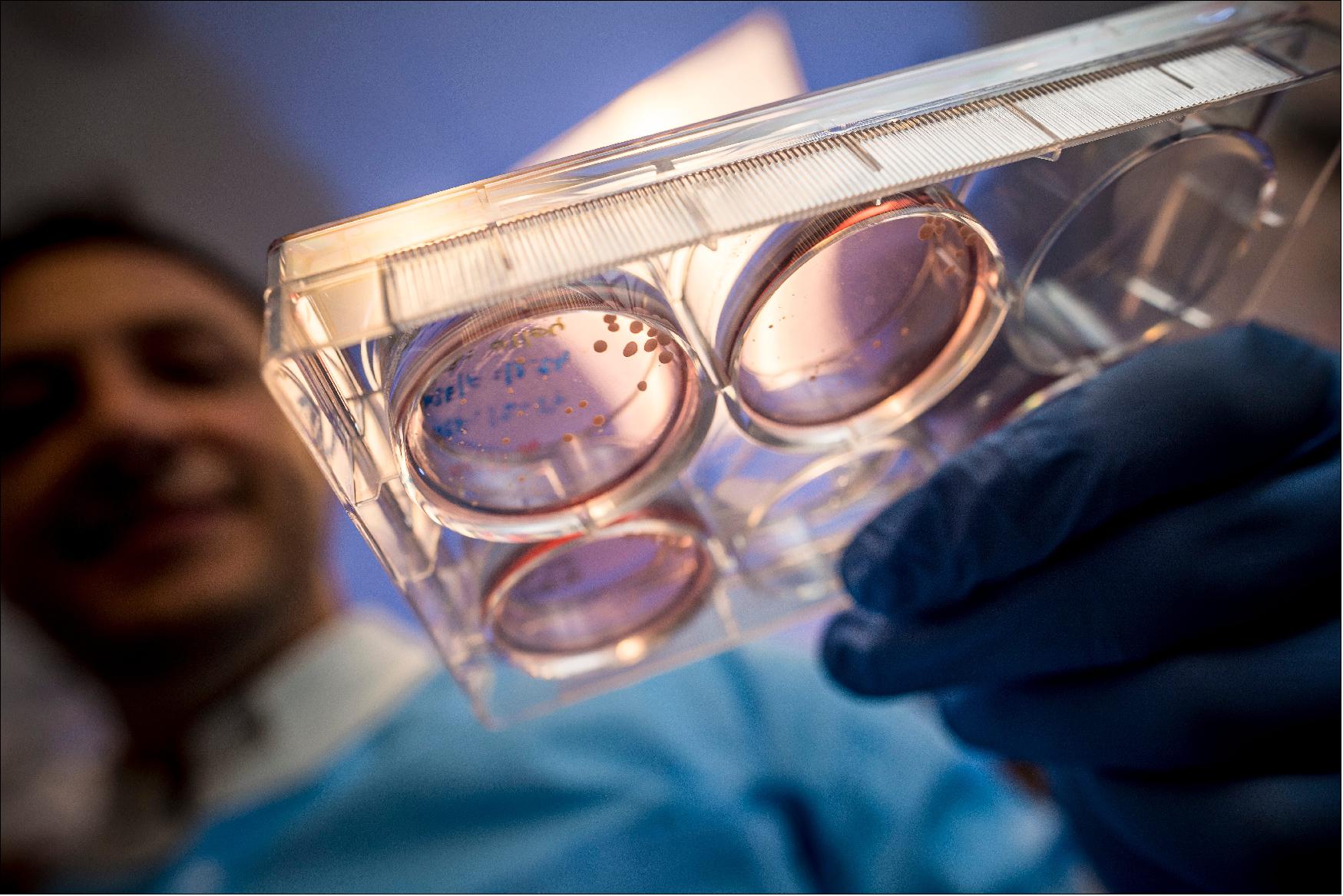
These are just a few of the hundreds of investigations currently being conducted aboard the orbiting laboratory in the areas of biology and biotechnology, physical sciences, and Earth and space science. Advances in these areas will help keep astronauts healthy during long-duration space travel and demonstrate technologies for future human and robotic exploration beyond low-Earth orbit to the Moon and Mars through NASA’s Artemis program.
ESA Payloads on CRS-21
For the past 20 years, astronauts have been performing experiments on the International Space Station. Science in low Earth orbit is not only hugely important in preparation for continued space exploration, the research also benefits life on Earth. We’ve seen discoveries that have advanced Earth-bound medicine, engineering and agriculture, and from this weekend onwards, microgravity will help us in our fight against COVID-19, with European experiments set to launch to the International Space Station on the 21st SpaceX cargo mission. 3)
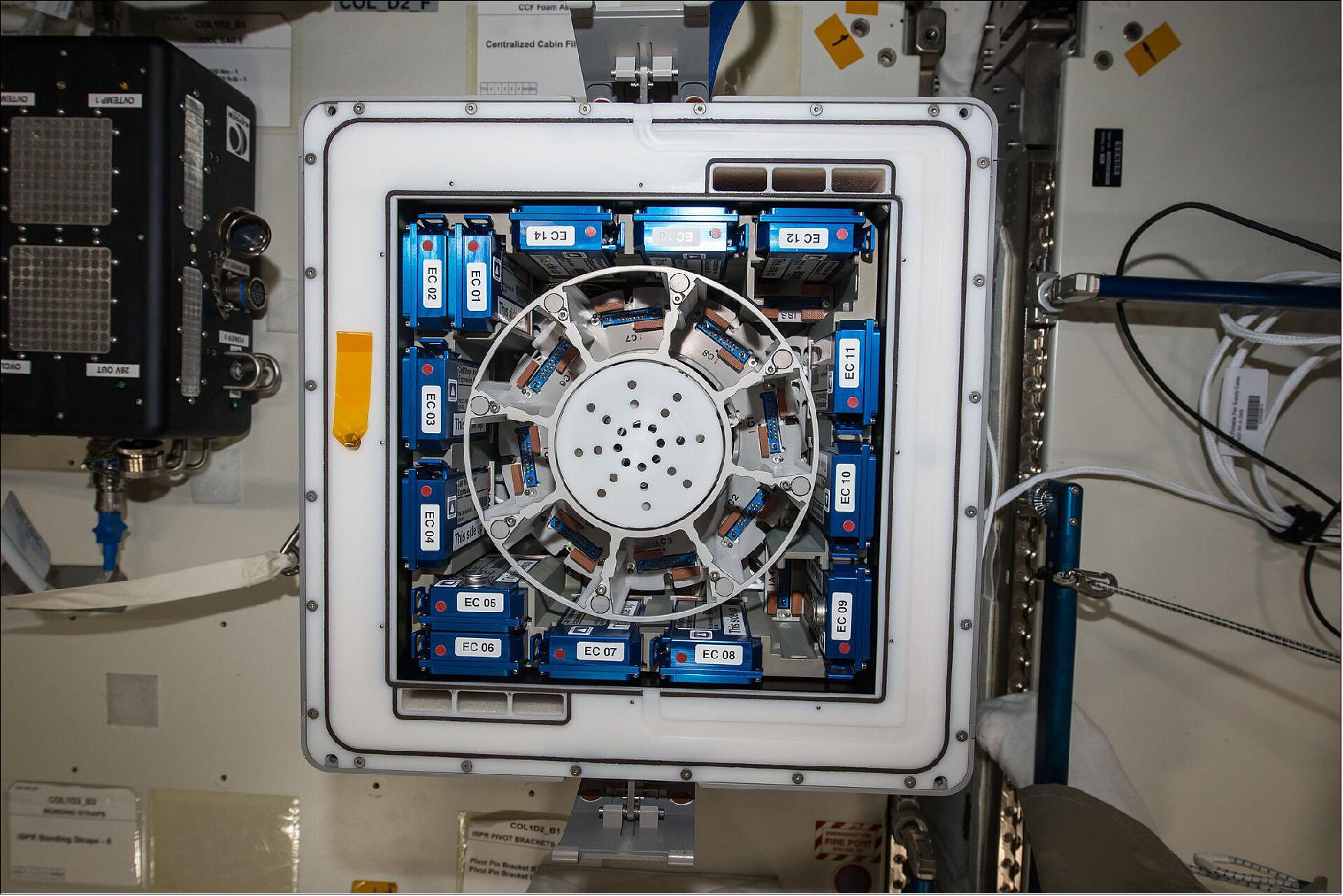
COVID-19 Medicine
Scientists will use Europe’s commercial ICE Cubes Service to test a COVID-19 medicine in microgravity in order to better understand how remdesivir interacts with its delivery substance cyclodextrin so that the drug’s efficiency can be improved. It will be the first time any COVID-19 related research takes place on the International Space Station.
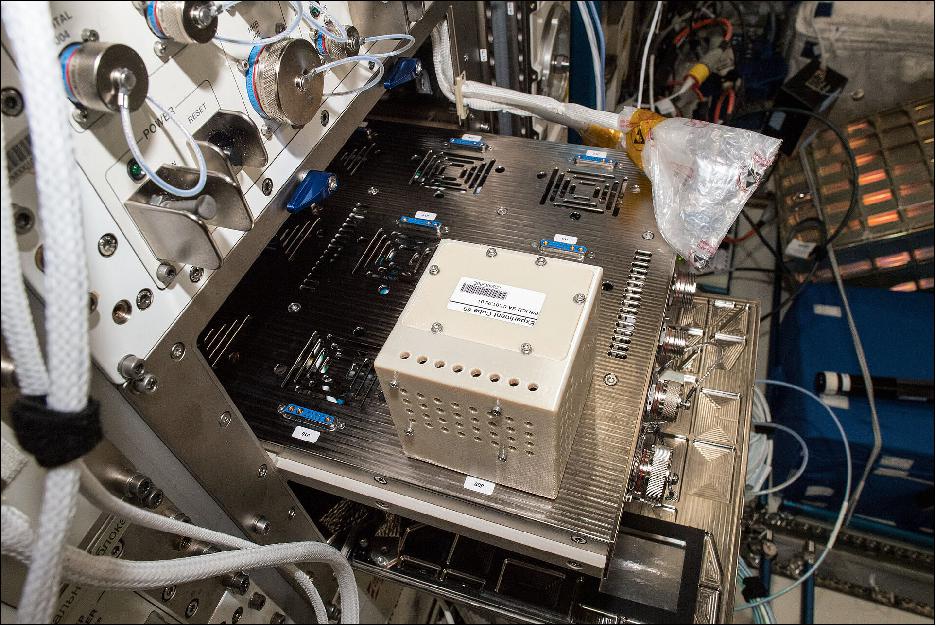
The experiment represents collaboration at its finest: The customers, InnoStudio and Cyclolab, are using the High Quality Protein Crystal Growth Service Kirara, operated by the Japan Manned Space Systems Corporation (JAMSS), to run an experiment in the ICE Cubes Facility, managed by Space Application Systems, in ESA’s Columbus laboratory.
BioAsteroid
The University of Edinburgh’s BioAsteroid mission will use the Bioreactor Express Service to investigate how gravity affects the interaction between microbes and rock in a liquid in reduced gravity, with support from the UK Space Agency. BioAsteroid builds on recently published research of the BioRock experiment that looked at how microbes performed under different gravitational circumstances to extract resources from rocks. These microbes could give us key insights on our way to colonizing the Moon and Mars.
The BioAsteroid project is a great example of how working with commercial partners can drastically speed-up research. It took roughly a decade for its predecessor BioRock to make it from conception to the International Space Station and back, whereas BioAsteroid will be traveling to space within a year from its conception.
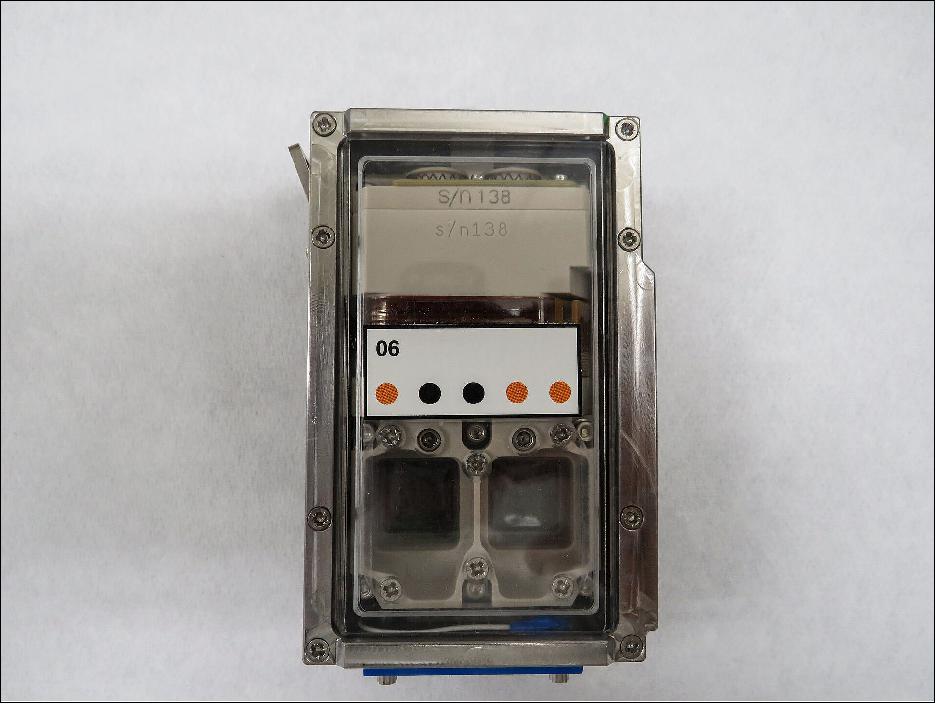
Rotifer-B
A highly anticipated second half of a two-part experiment, Rotifer-B2 will send microscopic animals called bdelloid rotifers to the Space Station. These tiny powerhouses are known for their fascinating ability to self-heal after intense radiation damage. Scientists want to learn whether or not space affects a rotifer’s ability to repair its own DNA. The rotifers will be exposed to high doses of radiation from X-ray and proton sources and sent to the International Space Station to be cultured for around a week in the Kubik incubator facility. Once back on Earth, the samples will be examined and compared to rotifers that stayed on ground. Understanding these mechanisms means that the tiny animals could be used as a model organism for understanding how DNA repair processes might be altered by spaceflight.
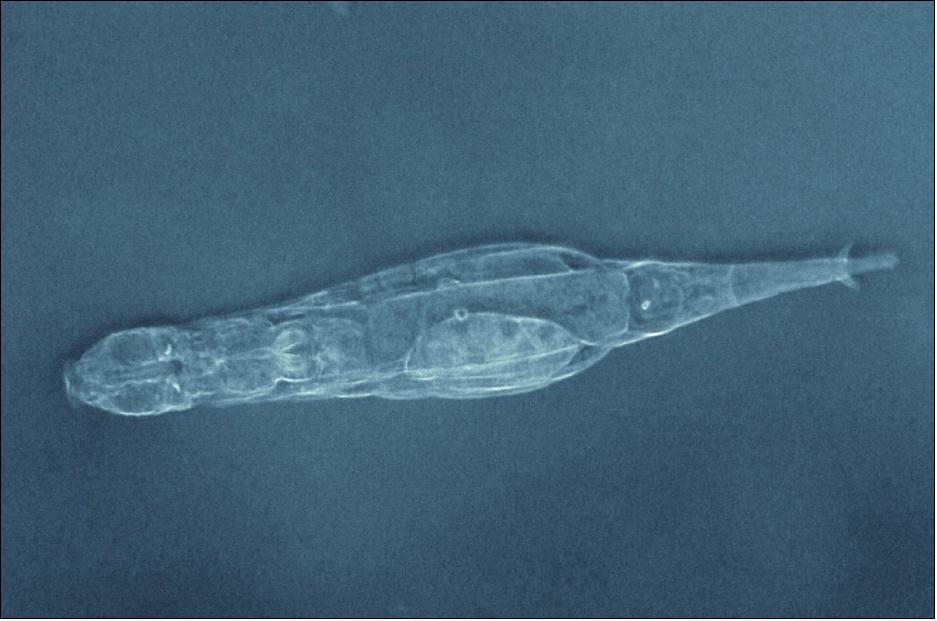
Benefits
Traditionally, research in orbit has been managed by governmental space agencies, working with scientists on the ground as the astronauts perform experiments on the International Space Station. But as the space industry expands, more commercial partners are getting involved.
The COVID-19 and BioAsteroid experiments demonstrate the benefits of working together with commercial partners. Researchers do not need to wait for a call for ideas or enter a selection process to be considered for an experiment aboard the International Space Station. This is an advantage for companies that are looking to be first on the market to present their results.
Increased access, market benefits for commercial companies and shorter execution times all continue to increase the amount of space research and can therefore lead to new, more rapid discoveries. Discoveries that will help us explore farther into space, while at the same time providing benefits for people here on Earth, are good news for everyone.
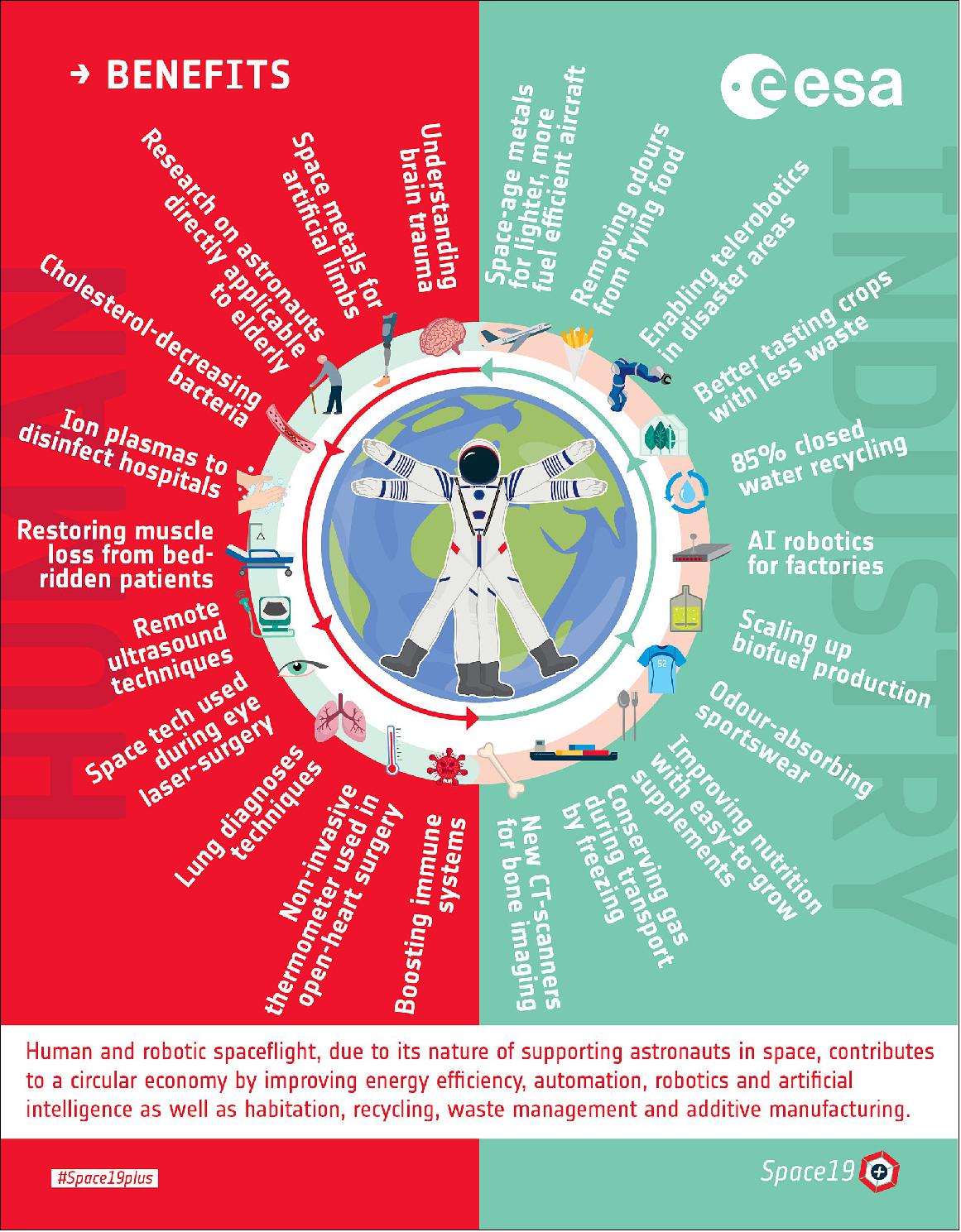
Mission Status
• January 14, 2021: Inside one of the containers of this 40-cm-across miniature laboratory in orbit, a battle is set to start between asteroid-like fragments and rock-hungry microbes, to probe their use for space mining in the future. 4)
- The University of Edinburgh’s ‘BioAsteroid’ payload is one of multiple experiments running simultaneously aboard ESA’s Kubik – Russian for cube – facility aboard Europe's Columbus module of the International Space Station. It found its way to orbit via the new commercial Bioreactor Express Service.
- The experimenters want to see how BioAsteroid’s combination of bacteria and fungi interact with the rock in reduced gravity, including to observe whether characteristic ‘biofilms’ will be grown on rock surfaces, comparable to dental plaque on teeth.
- The microbes could in the future be cultivated to help mine resources. So-called bio-mining has potential on Earth and in space exploration to recover economically useful elements from rock, as well as creating fertile soil from lunar dust.
• January 13, 2021: SpaceX’s upgraded Dragon cargo spacecraft splashed down at 8:26 p.m. EST west of Tampa off the Florida coast, marking the return of the company’s 21st contracted cargo resupply mission to the International Space Station for NASA. The spacecraft carried more than 4,400 pounds (~2,000 kg) of valuable scientific experiments and other cargo back to Earth. 5)
- The upgraded cargo Dragon capsule used for this mission contains double the powered locker availability of previous capsules, allowing for a significant increase in the research that can be delivered back to scientists. Some scientists will get their research returned quickly, four to nine hours after splashdown.
- The spacecraft, launched Dec. 6, brought nearly 3,000 kg of cargo to the station, including the Bishop commercial airlock developed by NanoRacks.
- The CRS-21 mission was the first to use the new version of the Dragon cargo spacecraft, based on the vehicle SpaceX developed for the commercial crew program. It includes additional cargo volume and on-orbit lifetime, and can dock and undock autonomously, rather than be berthed by the station’s robotic arm.
• January 12, 2021: With NASA astronaut Victor Glover monitoring aboard the International Space Station, an upgraded SpaceX cargo Dragon spacecraft undocked from the International Docking Adapter on the station’s space-facing port of the Harmony module at 9:05 a.m. EST on Tuesday, January 12. 6)
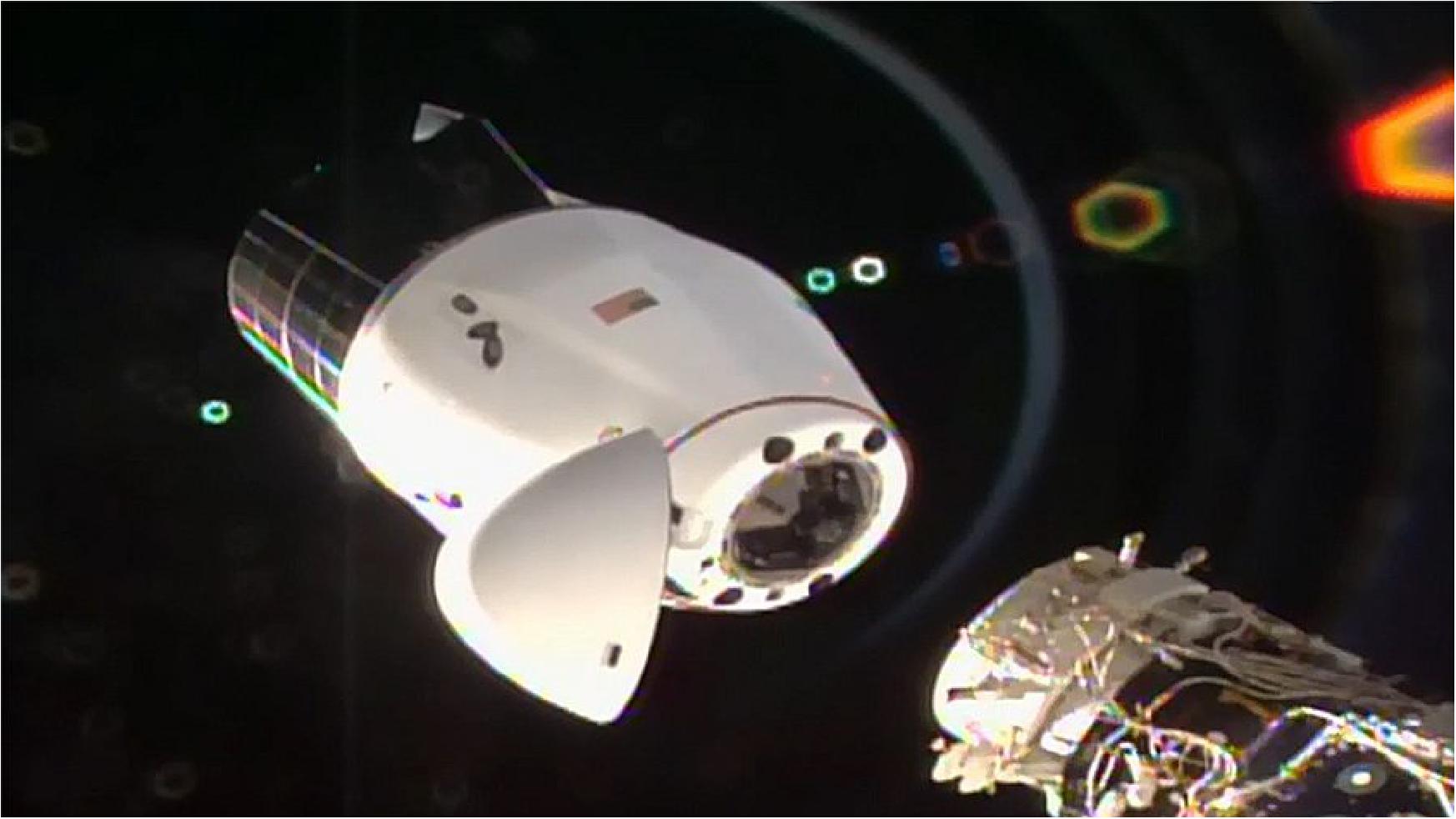
- It is the first undocking of a U.S. commercial cargo craft from the complex. Previous cargo Dragon spacecraft were attached and removed from the space station using the station’s robotic Canadarm2.
- Dragon will fire its thrusters to move a safe distance from the space station during the next 36 hours. On Wednesday, Jan. 13, Dragon will conduct a deorbit burn at 7:37 p.m. to begin its re-entry sequence into Earth’s atmosphere. Dragon is expected to splash down west of Tampa off the Florida coast about 8:27 p.m. The splashdown will not be broadcast.
- The upgraded cargo Dragon capsule used for this mission contains double the powered locker availability of previous capsules, allowing for a significant increase in the research that can be carried back to Earth.
- Splashing down off the coast of Florida enables quick transportation of the science aboard the capsule to the agency’s Kennedy Space Center’s Space Station Processing Facility, delivering some science back into the hands of the researchers as soon as four to nine hours after splashdown. This shorter transportation timeframe allows researchers to collect data with minimal loss of microgravity effects. Previous cargo Dragon spacecraft returned to the Pacific Ocean, with quick-return science cargo processed at SpaceX’s facility in McGregor, Texas, and delivered to NASA’s Johnson Space Center in Houston.
• January 13, 2021: The first COVID-19 drug research in space started operations in the European commercial ICE-Cubes facility in December. By examining this medicine in microgravity, researcher aim to better understand how Remdesivir interacts with its delivery substance cyclodextrin so that the drug’s efficiency can be improved. This commercial research from Hungarian companies was installed next to other commercial cube experiments that continued to run in the facility, these include an art project from the International Space University, a test of how standard consumer equipment handles the radiation found in space, and an ESA test of cyber-security in space. 7)
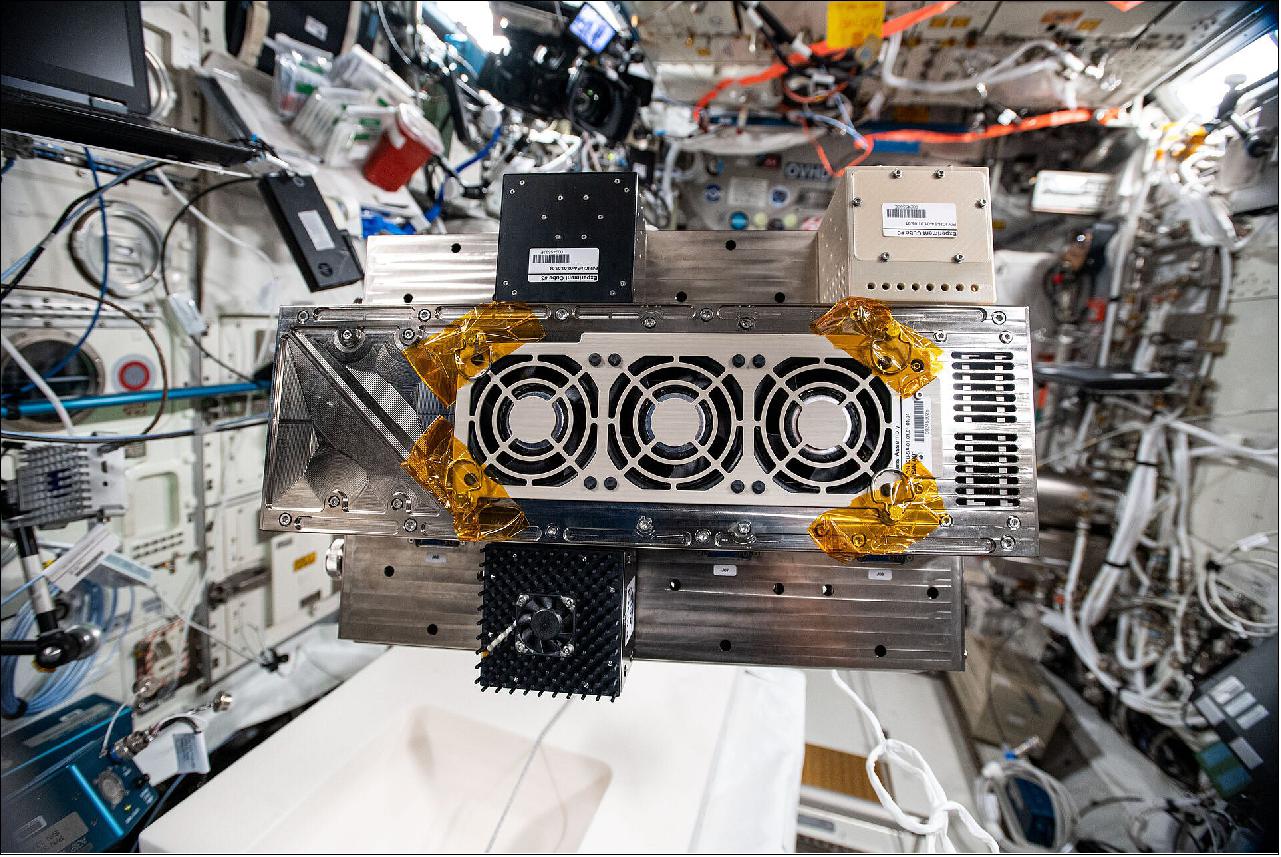
Metals
- On 3 December NASA astronaut Shannon Walker prepared ESA’s Materials Science Lab for a run of the Metcomp experiment by removing a finished cartridge with metal alloys. Copper and tin alloys are being melted and studied as they solidify to improve mathematical models of the process. The knowledge gained will allow for better industrial production of these metals on Earth. The new run with different alloys run was finished on 17 December and set aside for return to Earth on SpaceX CRS-21.
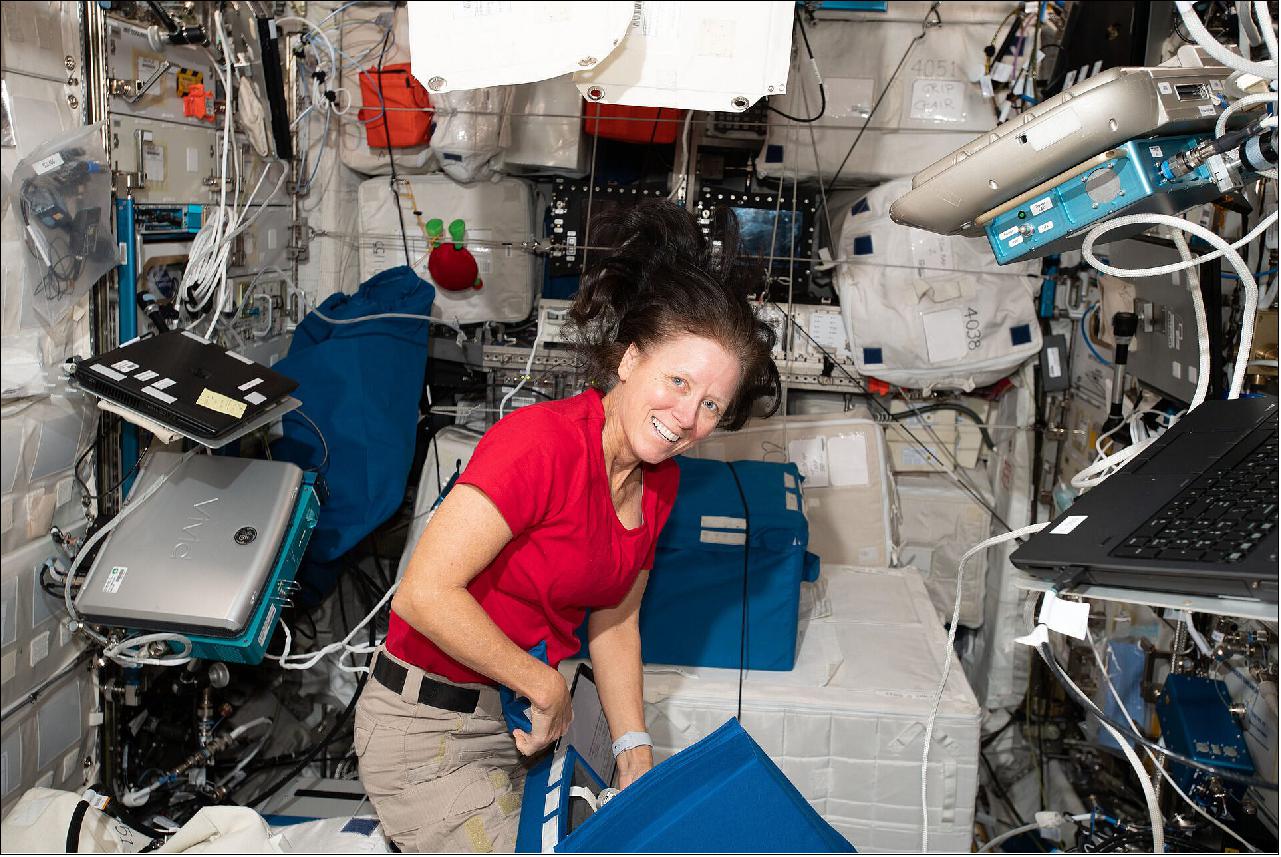
Bubbles
- Meanwhile, the Multiscale Boiling experiment is well into its second round of experiments that looks at how bubbles transfer heat. On 14 December a bonus run was conducted that focusses on shear flow and electrical fields. The facility will continue to run until January before it is placed in storage.
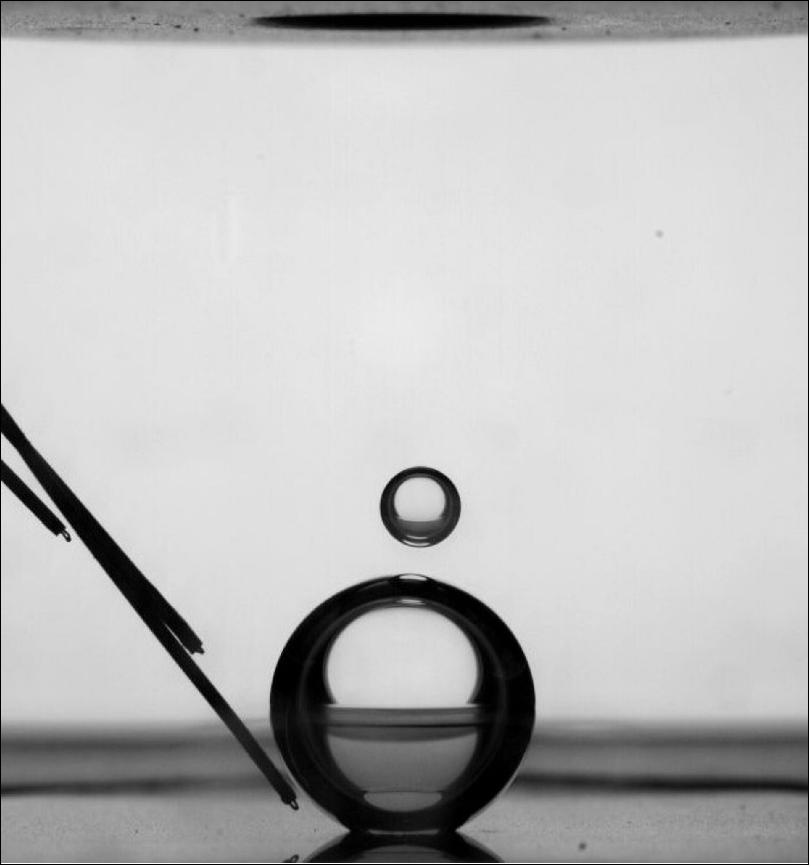
Wheel Animals
- Rotifers are microscopic animals that are known to be very resistant to radiation. Researchers are eager to understand how the organisms manage to repair their DNA after receiving radiation damage. A bunch of these animals were sent to the Space Station on Dragon and NASA astronaut Mike Hopkins prepared their home in advance: ESA’s Kubik incubator centrifuge. After a week, Mike removed the organisms and put them in the Station’s freezer ready for shipment back to Earth.
- Radiation is a significant problem for life outside of Earth’s atmosphere, and ESA’s Dosis-3D sensors are continuously charting radiation levels around the International Space Station. On 22 December Japanese astronaut Soichi Noguchi performed a monthly check of the dosimeters that are dotted around the outpost.
- Rotifers are microscopic animals that are known to be very resistant to radiation. Researchers are eager to understand how the organisms manage to repair their DNA after receiving radiation damage. A bunch of these animals were sent to the Space Station on Dragon and Mike prepared their home in advance: ESA’s Kubik incubator centrifuge. After a week, Mike removed the organisms and put them in the Station’s freezer ready for shipment back to Earth.
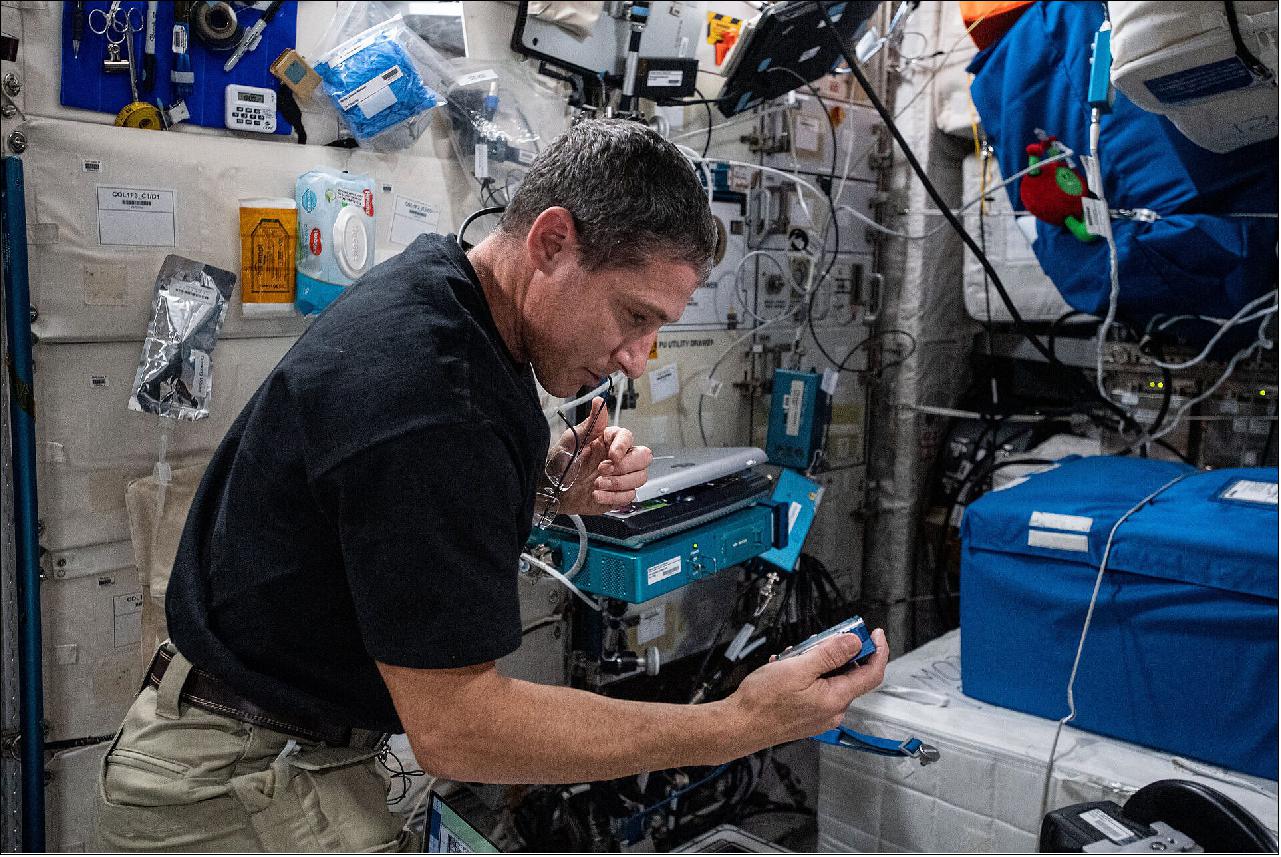
Muscles
- Mike and NASA astronaut Victor Glover ran their first sessions of the Myotones experiment on 16 and 17 December to understand how muscle tone changes from spaceflight. Results from this investigation provide a better understanding of the principles of human resting muscle tone. This could lead to the development of new strategies for alternative treatments for rehabilitation on Earth, as well as for future space missions.
- The Myotones experiment uses the Echo unit to download data to Earth. The same Echo hardware was used a few days later to support the Canadian Vascular Aging experiment that uses ultrasound to look at astronauts’ arteries and how they react to spaceflight.
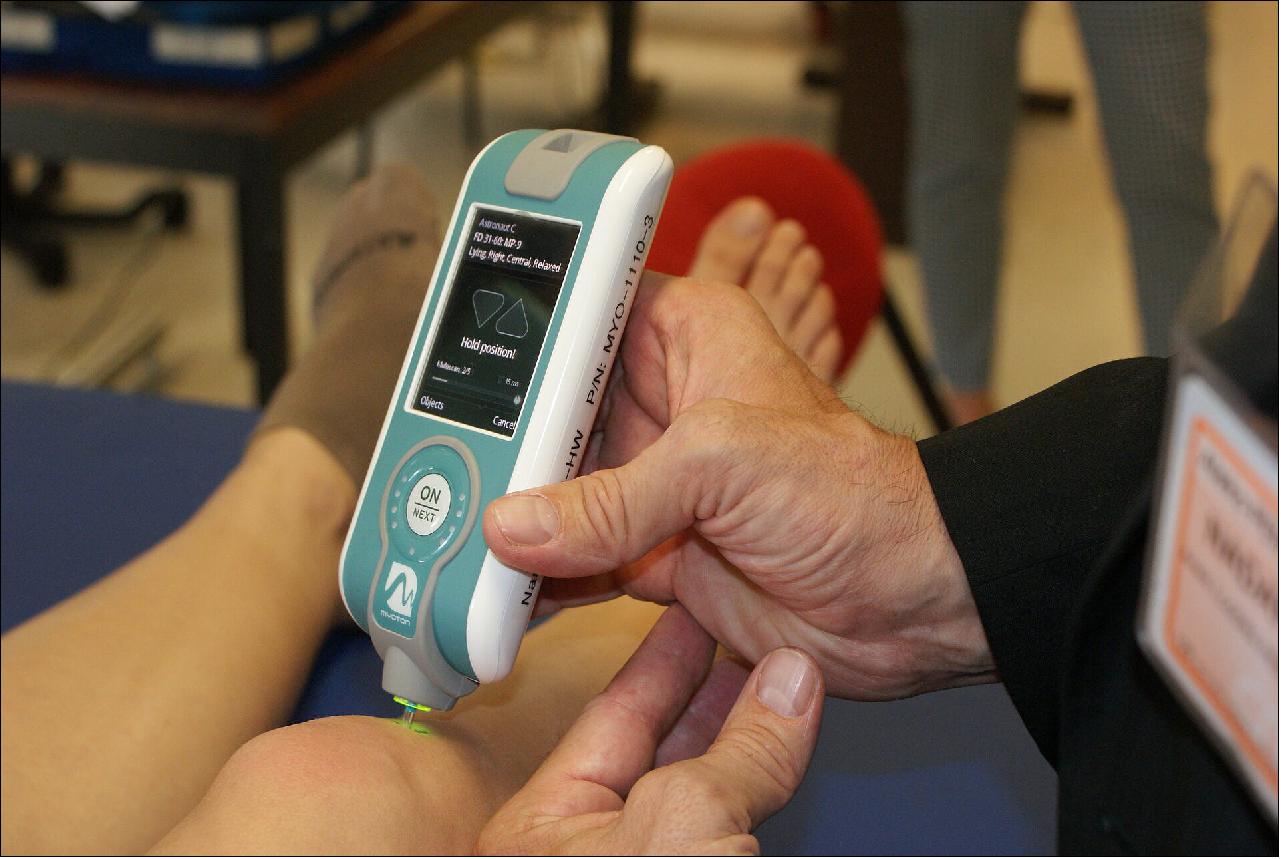
Microbes and Asteroids
- On 22 December Mike let loose a bunch of microbes to munch their way through a rock in liquid by placing the BioAsteroid container inside Kubik. The microbes will be assessed for performance under different gravitational circumstances to extract resources from rocks. So-called bio-mining has potential on Earth and in space exploration to recover economically useful elements from rock, as well as creating soil from lunar dust. Kubik will spin and incubate these microbes into January.
- A photo of the Kubik facility on the ISS is provided in Figure 5.
Return
- The astronauts in space started preparing experiments and hardware to return to Earth on SpaceX CRS-21. On 1 December Victor wrapped up the Foam-Coarsening sample cell for analysis on Earth. This experiment is looking at foam behavior at different stages, particularly as it transitions from a solid to liquid-like state. The actual cells are also planned for return to Earth in January, together with many of the experiments listed above – more on this next month.
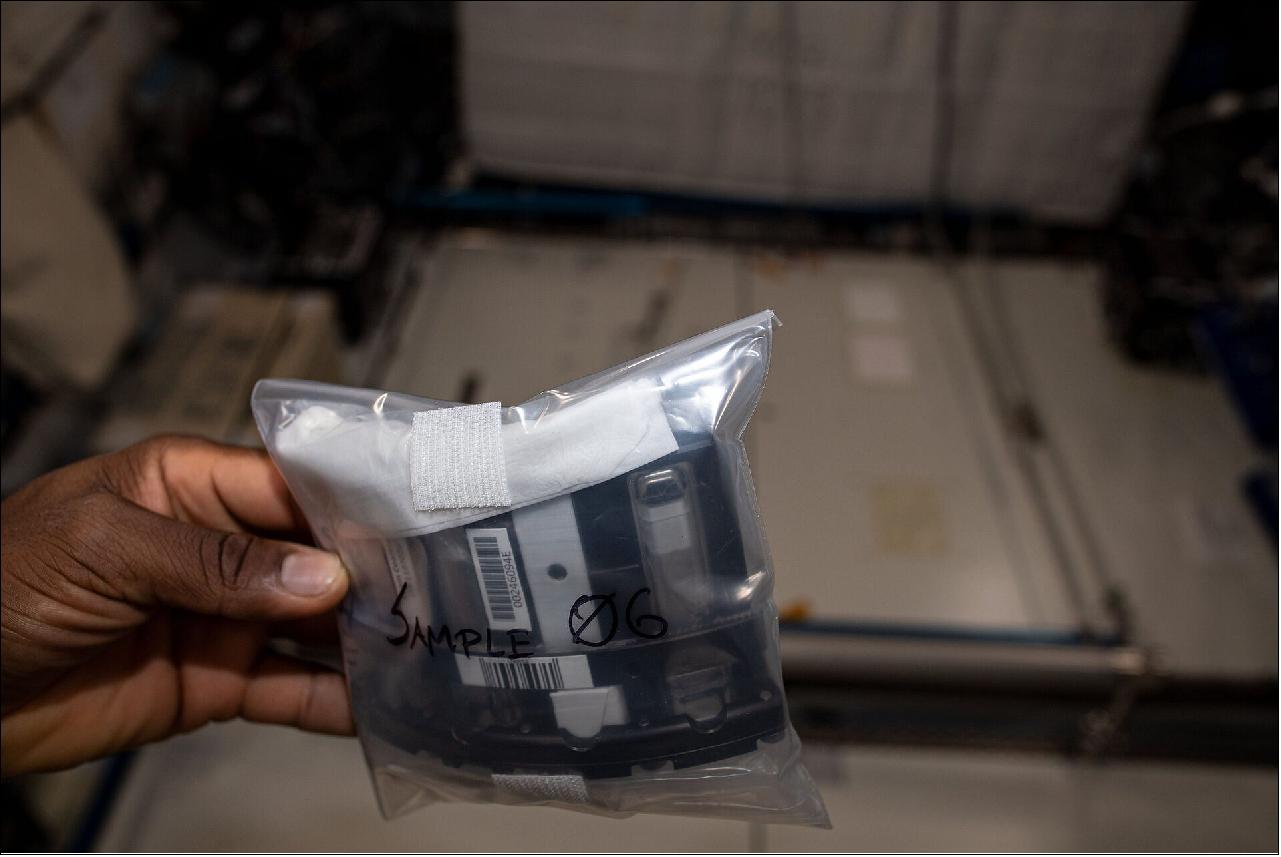
• December 21, 2020: Science operations continue to expand aboard the International Space Station with the installation of a new research airlock over the weekend. The seven-member Expedition 64 crew also stayed busy exploring a variety of space biology and physics phenomena. 8)
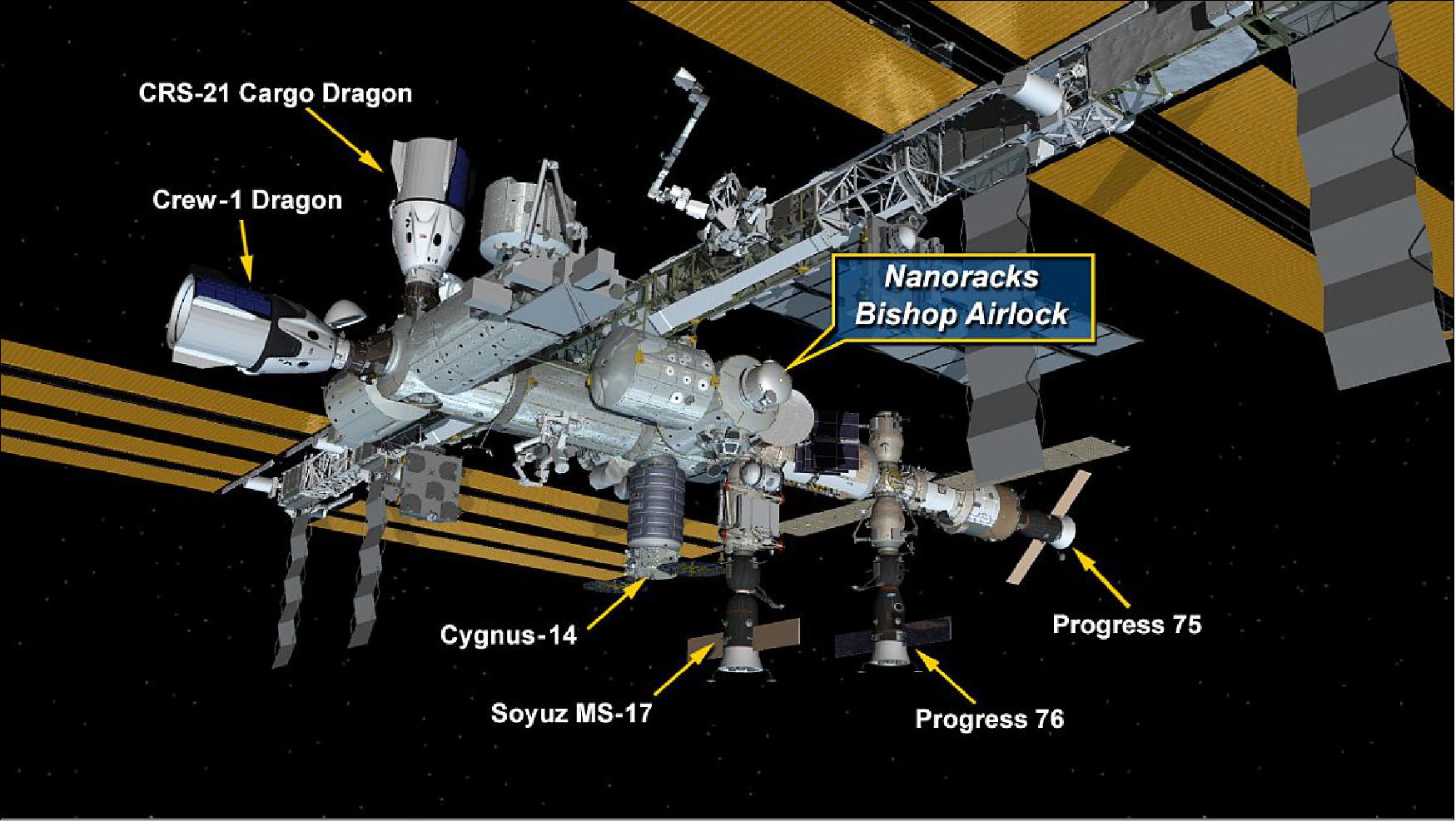
- Robotics controllers on Earth spent Saturday (Dec. 19) remotely commanding the Canadarm2 robotic arm to install the new NanoRacks Bishop science airlock delivered Dec. 7 aboard the SpaceX Cargo Dragon resupply ship. During a series of hours-long maneuvers, Bishop was extracted from Dragon’s unpressurized trunk and installed on the port side of the Tranquility module adjacent to BEAM, the Bigelow Expandable Activity Module.
- Bishop significantly increases the capacity for public and private research on the outside of the orbiting lab. The new science airlock also enables the deployment of larger satellites and the transfer of spacewalking tools and hardware inside and outside the station.
- Dragon also delivered over 2,000 pounds of new science investigations to the orbiting lab keeping the seven-member crew busy throughout December. Some of that research took place over the weekend with the astronauts studying planetary exploration technologies and potential treatments for heart conditions on and off the Earth.
- The new BioAsteroid experiment is looking at microbes as a way to breakdown space rocks into fertile soils or extract valuable metals and minerals. The crew serviced samples inside the Kubik incubator on Sunday for the study seeking to enable biomining that may advance space exploration and settlement.
- Flight Engineer Kate Rubins has been leading the Cardinal Heart study since activating the experiment shortly after its arrival aboard the Cargo Dragon. She serviced engineered heart tissues over the weekend to understand the cardiovascular response to microgravity. Results may give deeper insights into aging and weakening heart muscles that may lead to more effective therapies for humans living on and off the Earth.
• December 7, 2020: While the International Space Station was traveling over the southern Indian Ocean, a SpaceX Dragon cargo spacecraft autonomously docked to the space-facing side of the orbiting laboratory’s Harmony module for the first time at 1:40 p.m. EST, Monday, Dec. 7. NASA astronauts Kate Rubins and Victor Glover monitored docking operations for Dragon. 10)
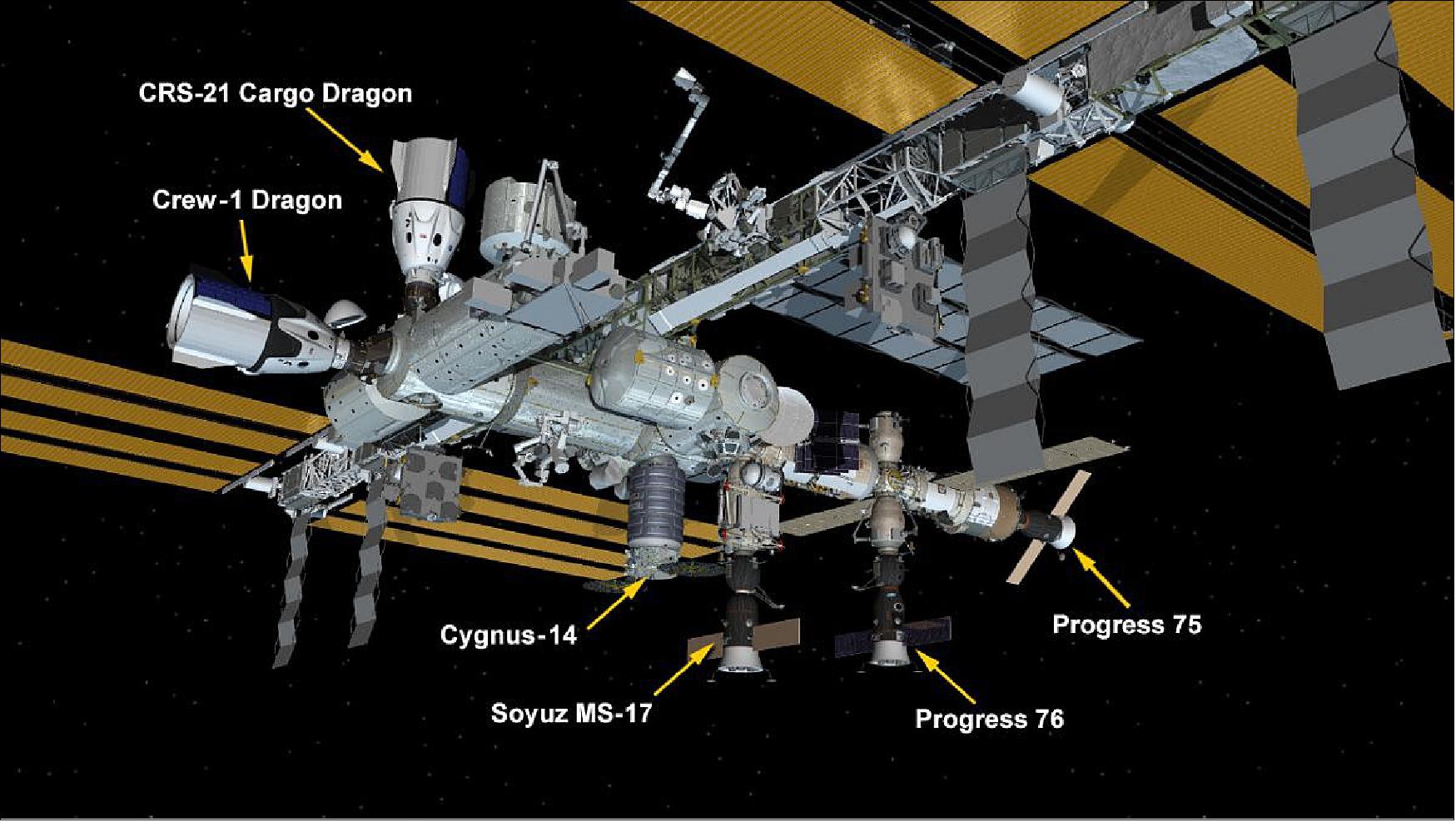
- Some of the science being delivered on this mission includes a study aimed at better understanding heart disease to support development of treatments for patients on Earth, research into how microbes can be used for biomining on asteroids, and a tool being tested for quick and accurate blood analysis in microgravity. The first commercially owned and operated airlock on the space station, the Nanoracks Bishop Airlock, arrives in the unpressurized trunk of the Dragon cargo spacecraft. Bishop will provide a variety of capabilities to the orbiting laboratory, including CubeSat deployment, and support of external payloads.
- The Dragon launched on SpaceX’s 21st contracted commercial resupply mission at 11:17 a.m. EST Sunday, Dec. 6 from Launch Complex 39A at NASA’s Kennedy Space Center in Florida. After Dragon spends approximately one month attached to the space station, the spacecraft will return to Earth with cargo and research.
References
1) Stephen Clark, ”SpaceX launches first in new line of upgraded space station cargo ships,” Spaceflight Now, 6 December 2020, URL: https://spaceflightnow.com/2020/12/06/
spacex-launches-first-in-new-line-of-upgraded-space-station-cargo-ships/
2) Stephanie Schierholz, Monica Witt, Leah Cheshier, ”NASA Science, New Airlock Heads to Space Station on SpaceX Cargo Spacecraft,” NASA Press Release 20-112, 06 December 2020, URL: https://www.nasa.gov/press-release/
nasa-science-new-airlock-heads-to-space-station-on-spacex-cargo-spacecraft
3) ”COVID-19 drug research and bio-mining launching to Space Station,” ESA Science & Exploration, 04 December 2020, URL: https://www.esa.int/Science_Exploration/
Human_and_Robotic_Exploration/COVID-19_drug_research_and_bio-mining_launching_to_Space_Station
4) ”Asteroids vs. microbes,” ESA 14 January 2021, URL: https://www.esa.int/ESA_Multimedia/Images/2021/01/Asteroids_vs._microbes
5) Mark Garcia, ”SpaceX Cargo Dragon Splashes Down Loaded With Science Experiments,” NASA Space Station, 13 January 2021, URL: https://blogs.nasa.gov/spacestation/2021/01/13/
spacex-cargo-dragon-splashes-down-loaded-with-science-experiments/
6) Mark Garcia, ”Cargo Dragon Undocks from Station and Heads for Splashdown,” NASA Space Station, 12 January 2021, URL: https://blogs.nasa.gov/spacestation/2021/01/12/
cargo-dragon-undocks-from-station-and-heads-for-splashdown/
7) ”Muscles, metals, bubbles and rotifers – a month of European science in space,” ESA Science & Exploration, 13 January 2021, URL: https://www.esa.int/Science_Exploration/Human_and_Robotic_Exploration
/Muscles_metals_bubbles_and_rotifers_a_month_of_European_science_in_space
8) Norah Moran, ”New Science Airlock Expands Station’s Research Capacity,” NASA Space Station, 21 December 2020, URL: https://blogs.nasa.gov/spacestation/2020/12/21/
new-science-airlock-expands-stations-research-capacity/
9) ”Nanoracks Bishop Airlock Installed on International Space Station,” NanoRacks, 21 December 2020, URL: https://www.youtube.com/watch?v=YDq2dHxi_hY
10) Mark Garcia, ”New SpaceX Cargo Dragon Docks to Station,” NASA, 7 December 2020, URL: https://blogs.nasa.gov/spacestation/2020/12/07/new-spacex-cargo-dragon-docks-to-station/
The information compiled and edited in this article was provided by Herbert J. Kramer from his documentation of: ”Observation of the Earth and Its Environment: Survey of Missions and Sensors” (Springer Verlag) as well as many other sources after the publication of the 4th edition in 2002. - Comments and corrections to this article are always welcome for further updates (eoportal@symbios.space).